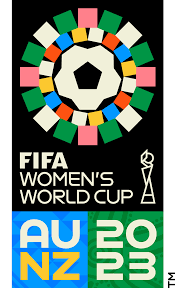Table of Contents
ToggleFIFA Women’s World Cup The Evolution: Celebrating Women’s Football Through History
Introduction
The Global Showcase of Women’s Football Excellence: The FIFA Women’s World Cup, a quadrennial international tournament, spotlighting the remarkable talent and prowess of female footballers worldwide. Over the years, this prestigious competition has grown in significance, empowering women and promoting gender equality in the realm of sports. In this article, we will explore the history of the FIFA Women’s World Cup, tracing its evolution from its inception to the present day.
Inception and Early Years
The idea of organizing a women’s international football tournament took shape in the 1960s and 1970s when women’s football began gaining traction worldwide. Inspired by the success of the men’s FIFA World Cup, the inaugural Women’s World Cup was first proposed in 1971. However, it took more than a decade to materialize.
Finally, in 1991, the inaugural FIFA Women’s World Cup was held in China. Twelve teams participated in the tournament, with the United States emerging as the first champions after defeating Norway 2-1 in the final. The competition garnered significant attention and laid the groundwork for the future growth of women’s football.
Growth and Recognition
The success of the first Women’s World Cup paved the way for subsequent editions, held every four years. In 1995, the tournament saw an expansion of participants to 16 teams, indicating the growing interest and participation in women’s football worldwide.
By the turn of the century, the tournament continued to gain momentum, with teams like the United States, Norway, Germany, and Brazil emerging as dominant forces in women’s football. Increased media coverage and fan engagement brought the sport to a larger audience, solidifying its status in the world of sports.
Improvements and Professionalism
With the turn of the 21st century, the FIFA Women’s World Cup experienced significant improvements. FIFA increased its efforts to promote and support women’s football, focusing on development programs, coaching, and infrastructure. This led to a rise in the overall standard of play, bringing forth a more competitive and entertaining spectacle.
Moreover, the participation of several countries from different continents contributed to the globalization of women’s football. This diversity not only showcased different styles of play but also broke cultural barriers, making the Women’s World Cup a truly international event.
Record-Breaking Moments
Throughout its history, the Women’s World Cup has witnessed numerous memorable moments and record-breaking achievements. Legendary players like Mia Hamm, Marta, Birgit Prinz, and Abby Wambach have left indelible marks on the tournament, inspiring future generations of female footballers.
In recent editions, attendance records have been shattered, demonstrating the growing popularity and interest in women’s football worldwide. The 2019 Women’s World Cup in France, in particular, became a cultural phenomenon, attracting unprecedented viewership and captivating audiences around the globe.
Pioneering Women’s Empowerment
Beyond the football pitch, the Women’s World Cup has been instrumental in empowering women and advocating for gender equality. The tournament has given female athletes a platform to demonstrate their abilities, challenge stereotypes, and demand equal treatment in sports.
Notably, the success and visibility of women’s football have inspired increased investment in the sport at the grassroots level. Many countries have started investing in women’s domestic leagues and youth development, fostering the growth of women’s football from the ground up.
FIFA Women’s World Cup 2023
In 2023, the world of football will once again unite to celebrate and witness the grand spectacle of the FIFA Women’s World Cup. As the pinnacle of women’s international football, the tournament promises to deliver thrilling matches, awe-inspiring moments, and fierce competition among the best teams from around the globe.
Hosted by a country that shares an unyielding passion for the beautiful game, the 2023 Women’s World Cup is set to break new ground and elevate the standards of women’s football to unprecedented heights. With state-of-the-art stadiums, cutting-edge technology, and a captivating atmosphere, the event aims to provide an unforgettable experience for fans, players, and officials alike.
As anticipation builds, all eyes turn to the participating teams, each determined to claim the coveted title of world champions. The journey to qualify for the tournament has been arduous, demanding exceptional skill, teamwork, and perseverance. National teams have meticulously prepared, honing their strategies, and relying on the brilliance of their star players to lead them to glory.
However, the Women’s World Cup is not just about the competition on the field; it is a celebration of the progress and empowerment of women in sports. It serves as a platform to inspire the next generation of female footballers, breaking down barriers and challenging gender stereotypes.
The 2023 edition of the Women’s World Cup comes at a crucial moment in history, where women’s football has gained unprecedented recognition and support. The growing popularity and commercial interest in the sport have paved the way for increased investment in women’s domestic leagues and youth development programs, creating a solid foundation for sustainable growth.
As the tournament kicks off, millions of fans worldwide will come together to cheer on their favorite teams, fostering a sense of camaraderie and unity among nations. Beyond the boundaries of language, culture, and geography, the Women’s World Cup showcases the unifying power of sports, emphasizing that football truly is a universal language.
In conclusion, the FIFA Women’s World Cup 2023 promises to be a milestone event in the history of women’s football, embodying the spirit of competition, empowerment, and unity. It is an opportunity to celebrate the remarkable achievements of female athletes and to take another stride towards a world where women’s sports receive the recognition and support they genuinely deserve. As the countdown begins, the world eagerly awaits the captivating moments that will etch this tournament into the annals of football history.
Conclusion
The FIFA Women’s World Cup has come a long way since its inception in 1991, evolving into a prestigious and empowering global event. From its humble beginnings, the tournament has grown to become a celebration of women’s football, showcasing the talent, determination, and passion of female athletes on the world stage.
As the Women’s World Cup continues to grow, it will undoubtedly play a pivotal role in furthering gender equality in sports and inspiring the next generation of female footballers. The tournament’s history is a testament to the incredible progress women’s football has made, and it serves as a beacon of hope for a future where women’s sports will be embraced and celebrated equally alongside their male counterparts.





nice content!nice history!! boba 😀